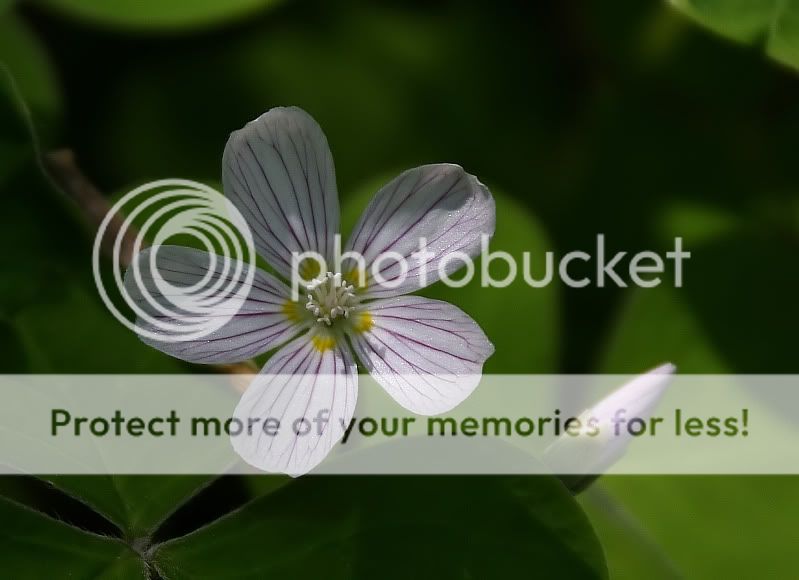Winston Rockwell
New member
i have no idea what this little flower is, but i love the delicate texture and colors, and the way the filtered sunlight plays on it...



It is a bit more complicated than that. But these charts/tables are called taxonomic keys and they often lack pictures but can be commonly found on university websites for their local species. For more common species here in the PNW I recommend Plants And Animals Of The Pacific Northwest, An Illustrated Guide to the Natural History of Western Oregon, Washington, and British Columbia by Eugene N. Kozloff and Plants Of The Pacific Northwest Coast Washington, Oregon, British Columbia & Alaska by Pojar & Mackinnon (which is published under a different name in BC). The first book is my safety net (not 100% comprehensive but damn close ). The second has more pretty pictures and is a dash easier to use but has failed me in many species IDs which is where the Kozloff book comes in.Asher Kelman said:If you count the petals, look at how the leaves are arranged etc., there are charts to get the name.
Tides for Bush Point, Whidbey Island
Day High Tide Height Sunrise Moon Time % Moon
/Low Time Feet Sunset Visible
M 1 High 4:24 AM 10.3 8:00 AM Set 6:46 AM 91
1 Low 8:41 AM 8.5 4:28 PM Rise 2:17 PM
1 High 12:37 PM 10.2
1 Low 9:04 PM -2.1
Tu 2 High 5:07 AM 10.9 8:00 AM Set 7:51 AM 96
2 Low 9:49 AM 8.5 4:29 PM Rise 3:17 PM
2 High 1:24 PM 9.9
2 Low 9:47 PM -2.3
W 3 High 5:46 AM 11.0 8:00 AM Set 8:42 AM 99
3 Low 10:49 AM 8.3 4:30 PM Rise 4:27 PM
3 High 2:15 PM 9.5
3 Low 10:28 PM -2.1Winston Rockwell said:Sean DeMerchant said:This is likely wood-sorrel, Oxalis oregana, according to my guides. Were the leaves 3 lobed (not the technical term) similar to clover in shape?
Technically, the shot is missing a bit (poor exposure and lackluster composition).
The paragraph deliniation here was not what I wrote. The "Technically ..." was tacked on to the paragraph about the linked image. Which after a second look is questionable in exposure and looks like it was clipped by auto-levels.
My apologies if you were offended, that was not my intent. Nor was the slow response.
Winston Rockwell said:Cape Alava and La Push, the wilderness designation is appropriate.
I live on Whidbey Island and I assume the Western Side of the Puget Sound, Admiralty Inlet, The Straught of Jaun De Fuca are all similar. The reason for this is that there no train tracks on stabilized slopes of large rocks at the bases of bluffs. This is a land of shifting sands and deadheads washed up upon a shore. 2 foot waves can accur in 30 MPH sustained winds (wind speed is a guess) when that mixes with larger occassional tidal surges on a fast tide and a two foot wake or higher off a container ship and that large sandy beach becomes very dangerous. People to not walk at the bases of the bluffs when the tide is in, it is easily lethal from a simple mistake. You do not need to be at the base of a cliff to have nowhere to go to get out. Quicksand like water and large logs being shifted by the waves is not fun. Once you start mixing in the Straight of Jaun De Fuca you get lots of water moving past.
These areas are wildernesses. There are no marks of man except garbage. No permanent structures. Humanity is a visitor there.
Winston Rockwell said:...nothing a ship can do will make it move enough to pose a hazard; freighters move so slowly in the sound - limited to 7 knots or less - that even their wake is little more than a gentle wave by the time it reaches shore.
I live near and often hike along Admiralty Inlet which is the body of water to the west of Whidbey Island (the Puget Sound is to the south of Whidbey Island on every nautical chart I have checked (not too many but a few)). And along Admiralty Inlet you can regularly get 3 container ships going past in a short interval. 3 foot waves coming in is not unusual but not normal along the shipping lanes.
Winston Rockwell said:since it appears today may be clear and sunny, i might pack up my long glass and head for the local park... there are usually mergansers, wood ducks, and herons to photograph, and often other species as well...
I hope it went well.
enjoy,
Sean

Note that by textural the image captures the texture of how the subject feels on the eyes. Technically, the shot is missing a bit (poor exposure and lackluster composition).
Best wishes,The paragraph deliniation here was not what I wrote. The "Technically ..." was tacked on to the paragraph about the linked image. Which after a second look is questionable in exposure and looks like it was clipped by auto-levels.
